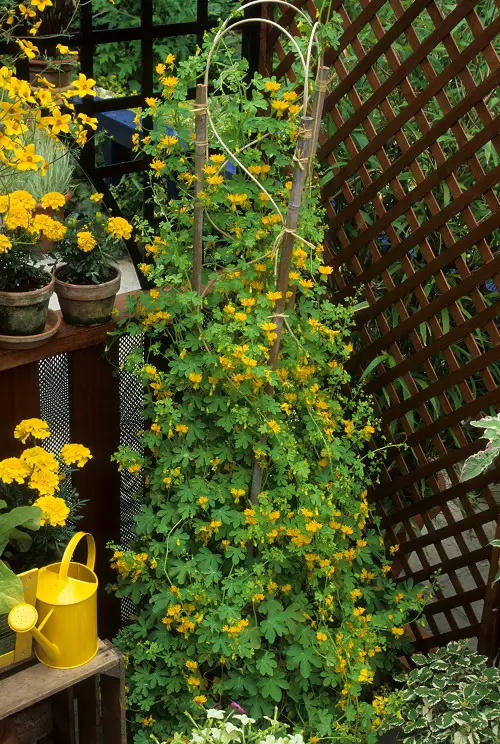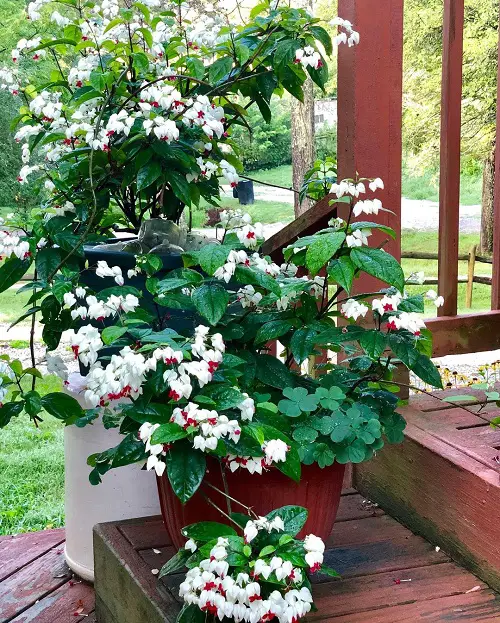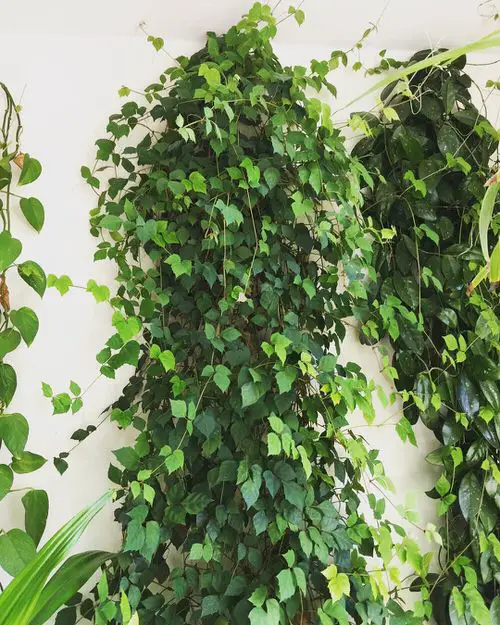Do you want walls and fences covered in sprawling vines but avoid this due to lack of sun? In that case, these 15 Best Low-Light Outdoor Vines are perfect for you!
If sunlight is playing hard to get, it’s time to usher in these lush shade-loving climbers into the spotlight! Morph those shady spots and dingy corners of your garden into green havens with these low-light outdoor vines that shine where the sun won’t!
Best Low-Light Outdoor Vines
1. Chocolate Vine
 Botanical Name: Akebia quinata
Botanical Name: Akebia quinata
USDA Zone: 4-9
This perennial vine is very shade-tolerant and grows well in little daylight. However, its chocolate-scented purplish brown blooms and sausage-shaped fruits need at least partial sunlight exposure to come to fruition. Chocolate Vine is deciduous in colder regions and semi-evergreen in warmer climates.
2. Canary Creeper
Botanical Name: Tropaeolum peregrinum
USDA Zone: 9-11
Reaching lengths of up to 8-12 feet, its attractive blue-green, deeply lobed leaves are a gorgeous addition to any garden. From early summer through fall, it produces an endless stream of delicately fringed bright yellow flowers.
This annual vine thrives in part sun and part shade, so choose a spot that isn’t as dark as night all throughout for beautiful flowers.
3. Woodbine
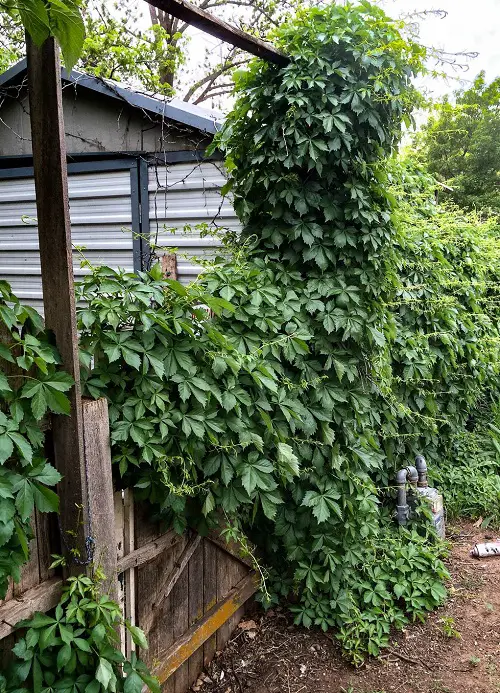
Botanical Name: Clematis virginiana
USDA Zone: 3-9
One of the few vines that blooms in shade, this North American native produces clusters of showy, fragrant, white flowers in autumn. It thrives in deep shade to part sun and can take on the shape of any support structure with ease. Plus, they attract many pollinators.
4. Dutchman’s Pipe
Botanical Name: Aristolochia macrophylla
USDA Zone: 4-11
This deciduous vine is often grown to provide privacy for a patio, arbor, or porch where the sun doesn’t shine. It grows best in full to part shade, but ensure that you provide well-drained soil. Dutchman’s Pipe is a great low-light outdoor vine option because it spreads fast and is low-maintenance; you can also grow it in a large pot.
5. Climbing Hydrangea
Botanical Name: Hydrangea petiolaris
USDA Zone: 4-8
Climbing Hydrangeas grow along the stems and then cling to a wall, fence, or the bark of a tree–because of their strong aerial rootlets. You can grow it at a location with partial shade and well-draining soil outdoors, and it will thank you with beautiful white floral clusters.
6. Japanese Hydrangea
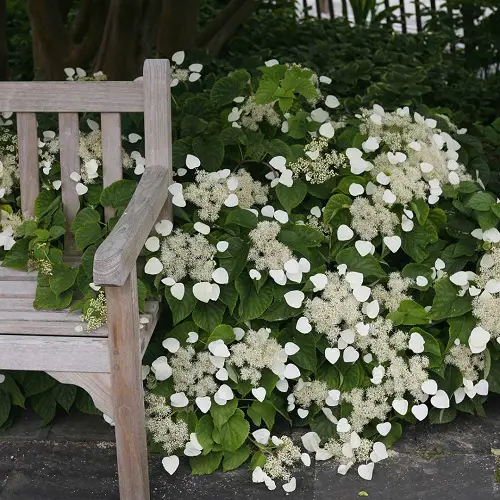
Botanical Name: Schizophragma hydrangeoides
USDA Zone: 5-9
Japanese Hydrangeas are late-bloomers that enjoy shade. When grown in dappled shade and well-drained humus-rich soil, they’ll give you flowers when others fade away. With sturdy stems and lobed leaves, these compact climbers produce spherical clusters of flowers of different hues. The colors of the blooms are determined by soil acidity and the presence of aluminum ions.
7. Boston Ivy
Botanical Name: Parthenocissus tricuspidata
USDA Zone: 4-8
This perennial climber tolerates both shade and full sun, with lush green foliage that can quickly colonize barn doors, arbors, fences, trellises, and even walls. In the shade, its foliage remains mostly green, while with sunlight, it takes on a striking signature crimson hue in fall.
8. Rose ‘Wedding Day’
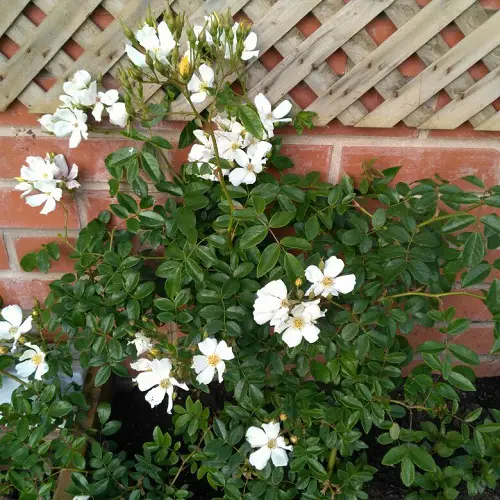
Botanical Name: Rosa ‘Wedding Day’
USDA Zone: 5-9
Unlike most sun-loving roses, this variety can bloom in partial sunlight, making it perfect for the parts of the garden that receive sunlight only for a few hours. But it’s not the only one–you can also go with cultivars like Eden Climber and Madame Plantier.
9. Sausage Vine
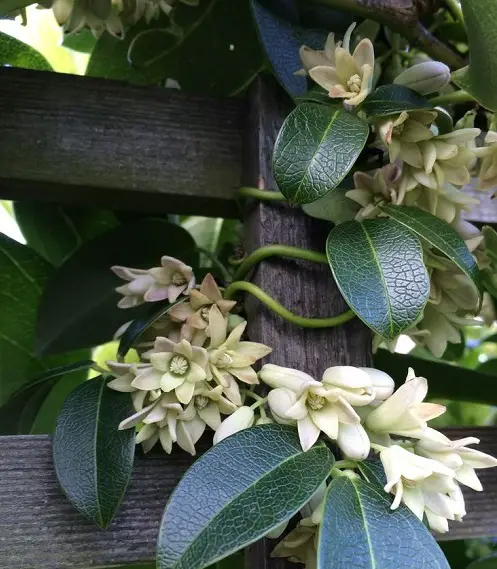
Botanical Name: Holboellia coriacea
USDA Zone: 7-10
This is a frost-hardy climber that grows up to 12-16 feet. Although this plant does well in sunny settings, it also does well in low light, making it a versatile outdoor choice. Sausage Vine produces scented pale pink flowers in spring or summer.
10. Tropical Bleeding Heart
Botanical Name: Clerodendrum thomsoniae
USDA Zone: 10-11
This non-aggressive, low-light outdoor vine is perfect for warm climates and grows well in dappled shade. Preferring filtered sunlight to grow best, it’s sheltered siesta time for this one by midday. Featuring dark green leaves, this ornamental plant is cherished for its duo-colored blooms and you can grow it in containers.
11. Kangaroo Vine
Botanical Name: Cissus antarctica
USDA Zone: 10-11
Kangaroo Vine is perfect for beginners as it’s easy and fast-growing. It thrives in complete shade and indirect light, as direct sunlight can damage its growth. This is why it is also used as an indoor plant. All you have to do is make the soil slightly moist and gently prune now and then to keep it in shape.
12. Grape Ivy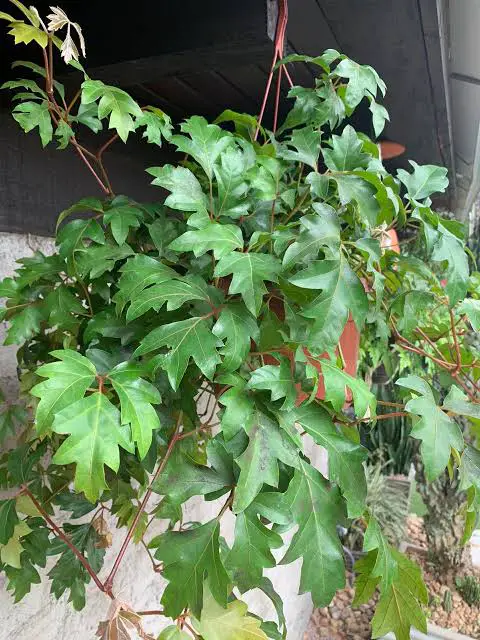
Botanical Name: Cissus alata
USDA Zone: 10-12
Grape ivy is an ornamental vining plant with pretty, oval-shaped, toothed leaves. It prefers bright, indirect sunlight to look best! It will grow, albeit slower, in low-light conditions but survive. Due to the short length of 2-3 meters, you can also plant it in hanging baskets and containers.
13. English Ivy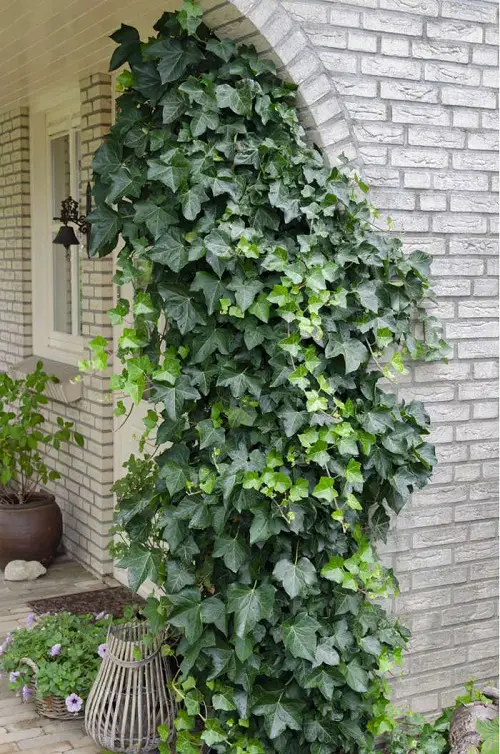
Botanical Name: Hedera helix
USDA Zone: 4-9
English ivy is a versatile, shade-loving vine. Its evergreen, lobed leaves create a dense, attractive cover on walls and surfaces. While easy to maintain, it can quickly turn invasive if not kept in check.
14. Pothos
Botanical Name: Epipremnum aureum
USDA Zone: 9-11
Pothos thrives in low-well light, both outdoors and indoors. If you’re bored of its classic glossy green, you can also choose varieties with yellow or white patterns. Plus, it purifies the air around it. Avoid these mistakes when you grow it.
15. Virginia Creeper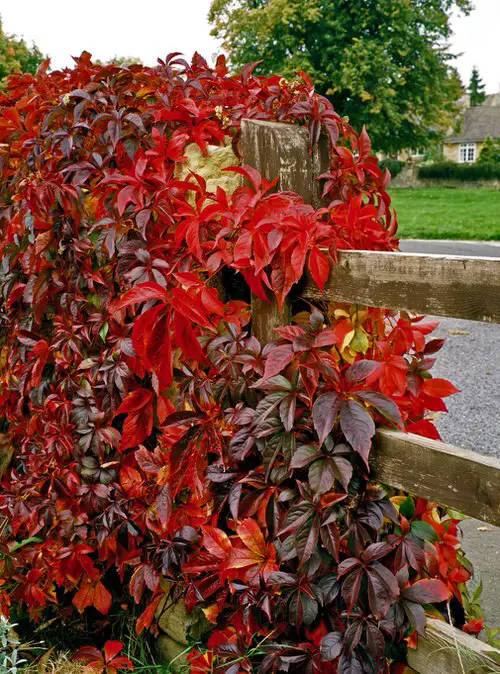
Botanical Name: Parthenocissus quinquefolia
USDA Zone: 3-9
This fast-growing, woody, deciduous vine isn’t picky about sunlight and can survive in various light options. It proliferates easily through walls, fences, tree barks, and trellises, and its green foliage turns beautiful red in fall. It’s a fast grower, and you can also use it as a ground cover.
Note: Like Boston Ivy, Virginia Creeper can be invasive in some areas. Before planting, be sure to check with local regulations.


